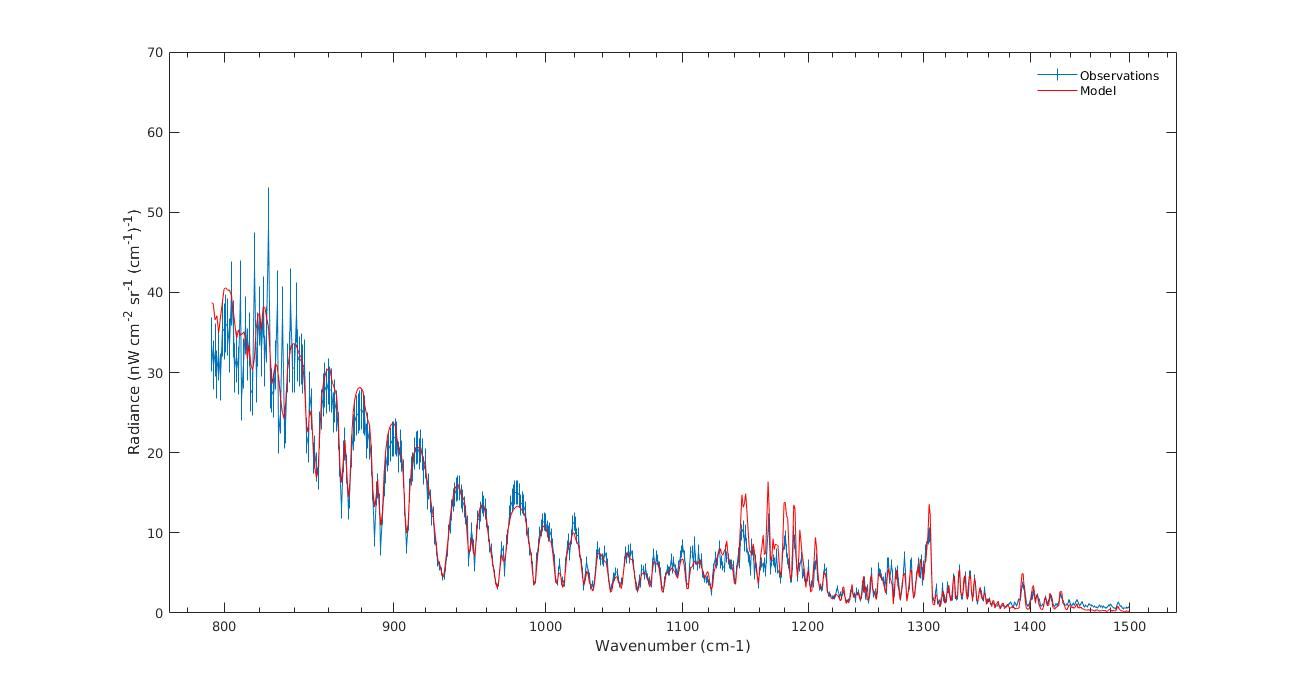A reanalysis of ISO-SWS Jupiter observations: first results
- 1Instituto de Astrofísica e Ciências do Espaço, Faculdade de Ciências da Universidade de Lisboa, Lisbon, Portugal (jribeiro@oal.ul.pt)
- 2Instituto de Astrofísica e Ciências do Espaço, Faculdade de Ciências da Universidade de Lisboa, Lisbon, Portugal (machado@oal.ul.pt)
- 3Universidad del País Vasco, Leioa, Spain (santiago.perez@ehu.eus)
- 4University of Oxford, Oxford, United Kingdom (patrick.irwin@physics.ox.ac.uk)
Determining the abundances of chemicals species and their isotopic ratios is fundamental to understand how and when the planets formed, in what conditions and what processes happen in their atmosphere. Jupiter still has some unanswered questions in this regard. The apparent low-temperature origin of the elements that formed the planet, the detailed meteorological processes that happen in its atmosphere remain largely unknown and the chemistry responsible for the colours of clouds of Jupiter is one of its oldest mysteries (Taylor et al., 2006). With this work, we hope to contribute to the progress of unravelling some of these questions.
We used the observations of Jupiter from the ESA mission Infrared Space Observatory (ISO) (Kessler et al., 1996) in the 793.65-3125 cm-1 (3.2-12.6 µm) region using the Short-Wave Spectrometer (SWS) (de Graauw et al., 1996). Our work is focused on the 793.65-1492.54 cm-1 (6.7-12.6 µm) region of the spectrum. Even though this data set is old, it was an important step in the study of Jupiter’s atmosphere and with the advancements in atmospheric models and line data, we argue that it warrants a revisit and reanalysis.

Figure 1: Plot of ISO-SWS data and used in this work and model fit.
Firstly, we used the NEMESIS radiative transfer suite (Irwin et al., 2008) to reproduce the results from Encrenaz et al., 1999 as a way to verify the validity of our method. This study is done using the CIRS NEMESIS template as a base adapted to the ISO-SWS data. We used correlated k-tables compiled for NH3, PH3, 12CH3D, 12CH4, 13CH4, C2H2, C2H6, CH3Br, CH3OH, HCOOH and SF6, with our results showing good agreement [Fig.1].
Having verified our method, we present here our first results of the study of abundances of 12CH3D, 12CH4, 13CH4, C2H2 and C2H6 of Jupiter’s atmosphere as well as our initial study of the pressure-temperature profile of Jupiter. We use the NEMESIS suite to determine the abundances as a function of altitude and retrieve the pressure-temperature profile. We compare our results with the profiles and abundances from Neimann et al., 1998 and Fletcher et al., 2016 with the aim to constrain the number of possible best fit profiles.
We also present our initial study the H/D and 12C/13C isotopic ratio of the Jovian atmosphere from the abundances of 12CH3D, 13CH4 and 12CH4 following the methodology from Fouchet et al., 2000.
Despite the ISO-SWS data used being global, with this preliminary work we hope to further advance the knowledge about the chemical processes that happen in Jupiter, as well as the chemical and temperature vertical distribution. As future work, we expect to extend our frequency domain to the range of ISO/SWS observations and study the 15N/14N ratio.
References
- de Graauw et al., Observing with the ISO short-wavelength spectrometer, A&A 315, L49-L54, 1996
- Encrenaz et al., The atmospheric composition and structure of Jupiter and Saturn form ISO observations: a preliminary review, Planetary and Space Science 47, 1225-1242, 1999
- Fletcher et al., Mid-infrared mapping of Jupiter’s temperatures, aerosol opacity and chemical distributions with IRTF/TEXES, Icarus 278, 128–161, 2016
- Fouchet et al., ISO-SWS Observations of Jupiter: Measurement of the Ammonia Tropospheric Profile and of the 15N/14N Isotopic Ratio, Icarus 143, 223–243, 2000
- Irwin et al., The NEMESIS planetary atmosphere radiative transfer and retrieval tool, Journal of Quantitative Spectroscopy & Radiative Transfer 109, 1136–1150, 2008
- Kessler et al., The Infrared Space Observatory (ISO) mission, A&A 315, L27, 1996
- Neimann et al., The composition of the Jovian atmosphere as determined by the Galileo probe mass spectrometer, Journal of Geophysical Research Atmospheres 103(E10):22831-45, 1998
- Taylor et al., Jupiter, The Planet, Satellites and Magnetosphere, Ch.4, Cambridge Planetary Science, Eds. Bagenal, Dowling, McKinnon, 2006
Acknowledgements
We acknowledge support from the Portuguese Fundação Para a Ciência e a Tecnologia (ref. PTDC/FIS-AST/29942/2017) through national funds and by FEDER through COMPETE 2020 (ref. POCI-01-0145 FEDER-007672).
How to cite: Ribeiro, J., Machado, P., Pérez-Hoyos, S., and Irwin, P.: A reanalysis of ISO-SWS Jupiter observations: first results, European Planetary Science Congress 2021, online, 13–24 Sep 2021, EPSC2021-262, https://doi.org/10.5194/epsc2021-262, 2021.

